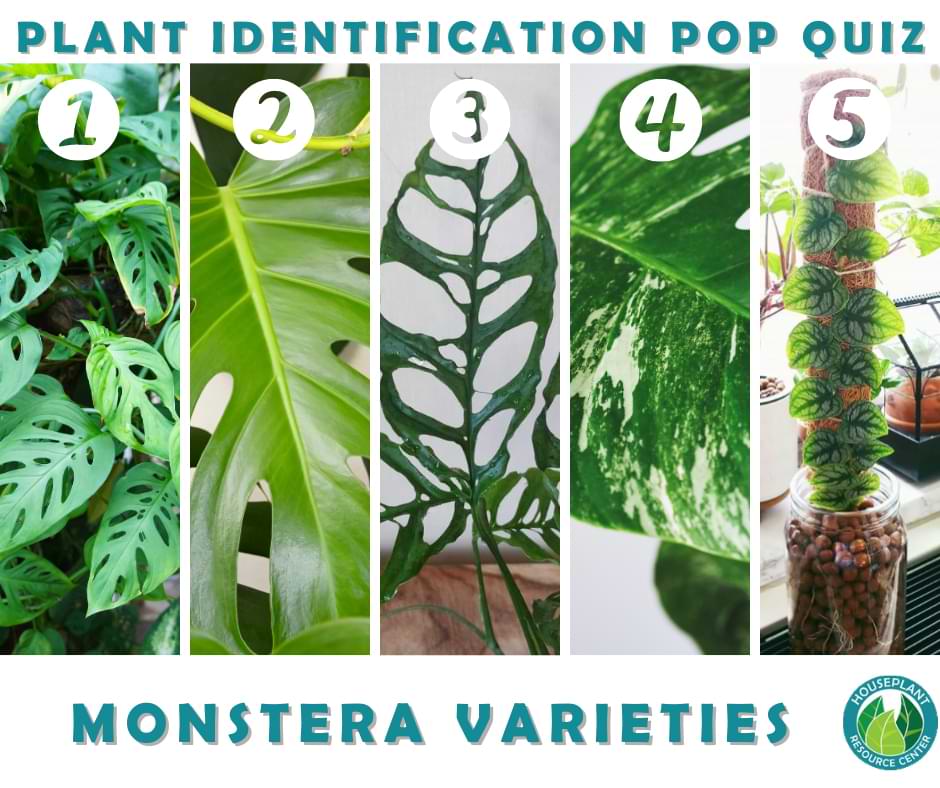Table of Contents
Monstera Identification
If you thought you only got holes in your leaves because of pesky insects, let us introduce you to the monstera plant. The Swiss cheese of plants, this beautiful specimen develops a series of holes on their leaves as they age. It’s kind of like if your child ran wild with scissors and cut up all your plant leaves and left a decorative pattern on each one. But it’s all Mother Nature. The theory is that the monstera, native to the Central American rainforest, developed holes in its leaves to withstand winds and allow water and sunlight to peek through in the dense forest.
Monstera Adansonii
The Adansonii differentiates itself from the other varieties and is called the Swiss cheese vine plant. Smaller than the other monstera types, the Adansonii is suitable for small spaces or hanging where it can trail down. Caring for this plant isn’t too stressful and could be the right gateway plant for your friends who don’t have the green thumb that you do. Place the Adansonii out of direct sunlight and water about once a week, and you will have a lovely holey plant.
Monstera Deliciosa
The Deliciosa can grow up to 70 feet tall and bear fruit—in the wild, of course. The fruit is known to taste like pineapple and bananas and looks like a green ear of corn. The roots are used to make ropes and baskets in South America and also as a snakebite remedy. As for your indoor plant, it loves humidity, so take out your humidifier, and your Deliciosa will thank you. Place it in indirect sunlight and keep it away from children and pets as it has been known to irritate tongues and induce drooling.
Monstera Obliqua
The Obliqua is a very rare thing, so don’t look for it at your local box stores. Obliquas are more holes than leaves, making them quite delicate. If you really want an Obliqua, be prepared to hunt for one and pay a four-figure price tag from a private grower or collector. This plant loves humidity, and a lot of it, so shoot for 85% humidity.
Variegated Monstera
These plants are stunning. Its green leaves with splashes of white, cream, yellow, or silver are a standout of the monstera family. You can find these at nurseries, but act quickly because they will get snatched up by enthusiasts. The plants need plenty of light, and you may even want to invest in grow lights.
Monstera Dubia
The Dubia is also known as the shingle plant because its leaves lie flat on the trees it climbs in the wild and look like shingles. The indoor houseplants you will find may not have the signature holes in their leaves, but they are still a beautiful variety with light- and dark-green heart-shaped leaves. Water your dubia every 7 to 10 days, and keep it in bright but indirect sunlight.
So those are the answers to the monstera identification quiz. We hope you enjoyed figuring out each variety. Enjoy your monstera!
What is your favorite kind of monstera?
Be sure to join the fiddle leaf fig conversation in our Facebook community.
To learn more:
- Sign up for our free Ultimate Monstera Webinar.
- Subscribe to our newsletter.
- Click to join our community on Facebook: Monstera Plant Resource Group.
- Read our Ultimate Monstera Watering Guide here.
- Be sure to grab your essentials here: Houseplant Propagation Promoter, Monstera Plant Food, 3-in-1 Moisture Meter, Premium Potting Soil, Houseplant Leaf Armor (which protects your houseplant from bacteria, fungus, and insects—and also cleans and adds shine to its leaves!)
- Looking to shop for plants online? Our trusted partners at Houseplantshop.com grow high-quality plants here in California and ship directly to you. Shop online now!





